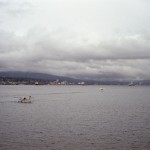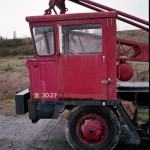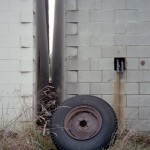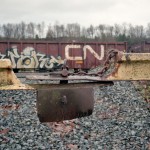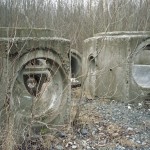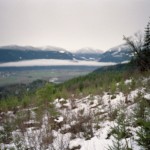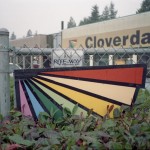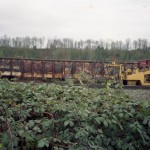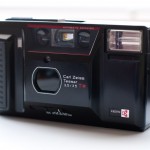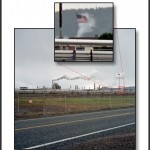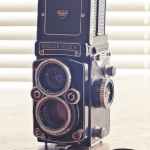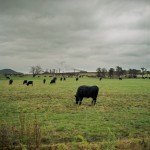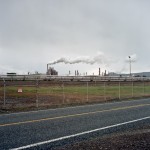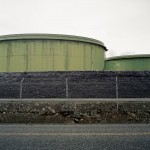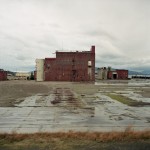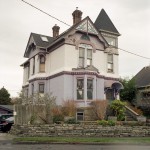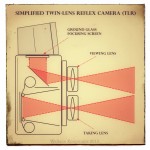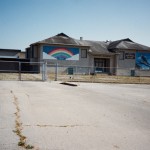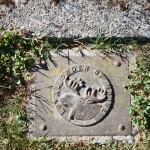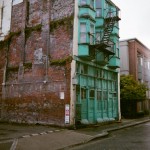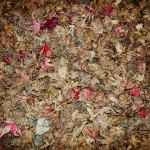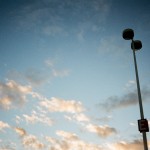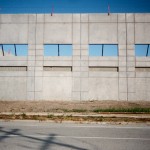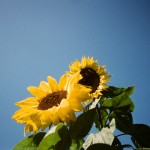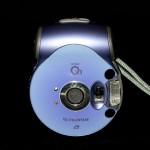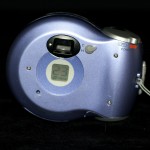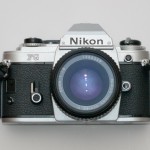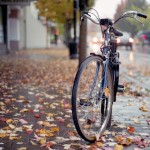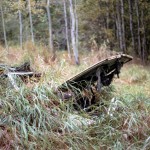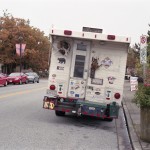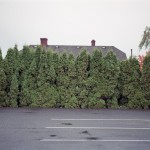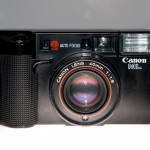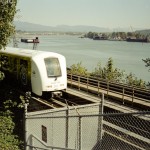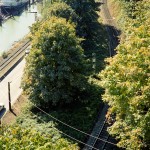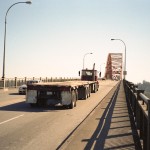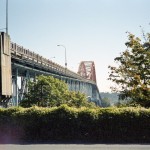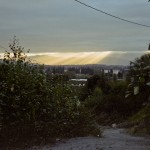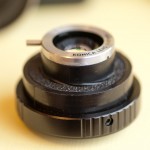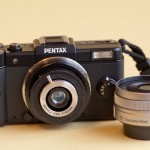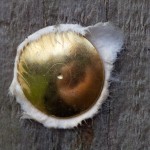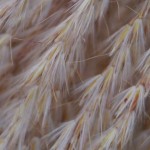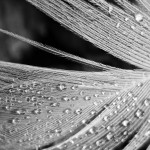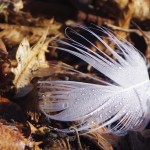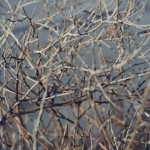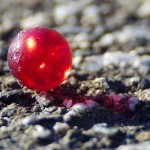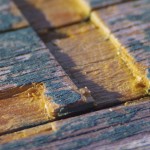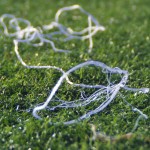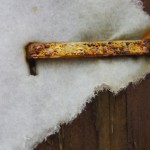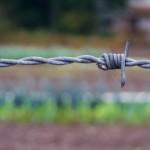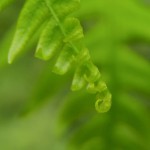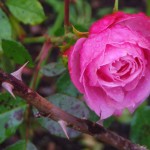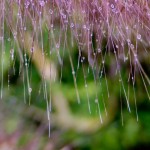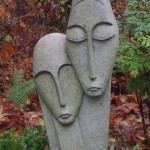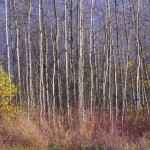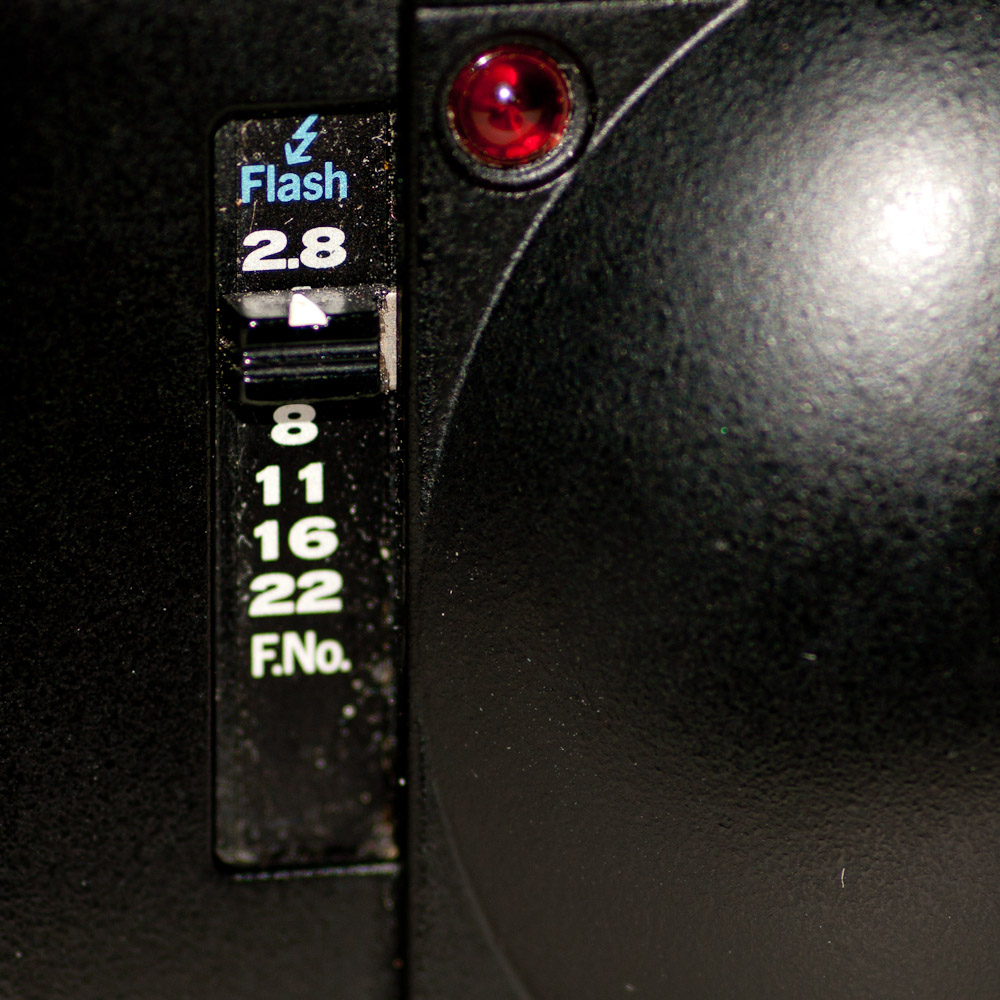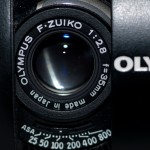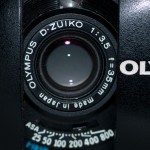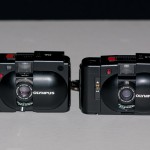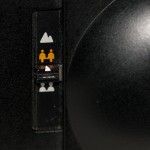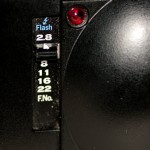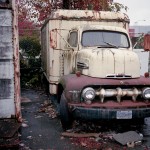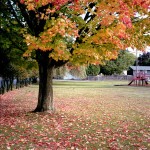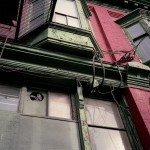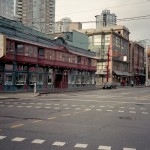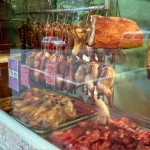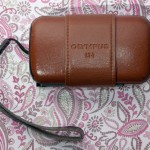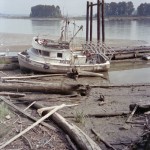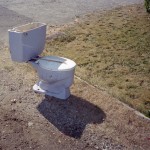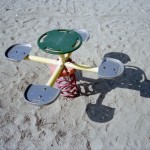Feb
4
2013

Previously on the Fuji DL500 Files: Our hero was uncertain of the quality from this optical oddity. In this episode it becomes much clearer that the lens performs best at 45mm despite the flare it causes and that the 28mm setting is a poor performer. As the 45mm focal length is achieved by swinging an additional optical group into the light path it is apparent that the central area of the lens is fine, it is the outer corners at which the wide setting fails. After only two episodes the Fuji DL500 files are cancelled.
I’m not quite sure how but according to the Technical Image Press Association it won the award for best 35mm compact camera in 1991, perhaps they never actually took any pictures with it.
8 comments | tags: film, Fuji | posted in Cameras, Photography
Jan
30
2013

I had hoped for better results from the Yashica T AF with its 35mm Carl Zeiss T* optics but I was unfortunately let down by the focus system. My copy no longer focuses to infinity. The reason for my optimism came from several factors beyond the lens; It has a manual ASA setting that can by easily used as a rudimentary exposure compensation system, it only fires the flash when you activate it rather than defaulting to on like so many other point and shoot cameras including the fantastic Yashica T3. Aesthetically I like the camera too for its angular glossy plastic and smoked glass lens cover that swings away to reveal the lens for each exposure, this all seems like it could only have sprung from the early 1980’s.
Back to my copy of this camera, only where I pointed the camera at nearby objects did it achieve correct focus, so all the shots into the distance are out of focus. Oh well I will mark the camera with a tag of shame and put it into the parts bin.
5 comments | tags: film, Yashica | posted in Cameras, Photography
Jan
23
2013
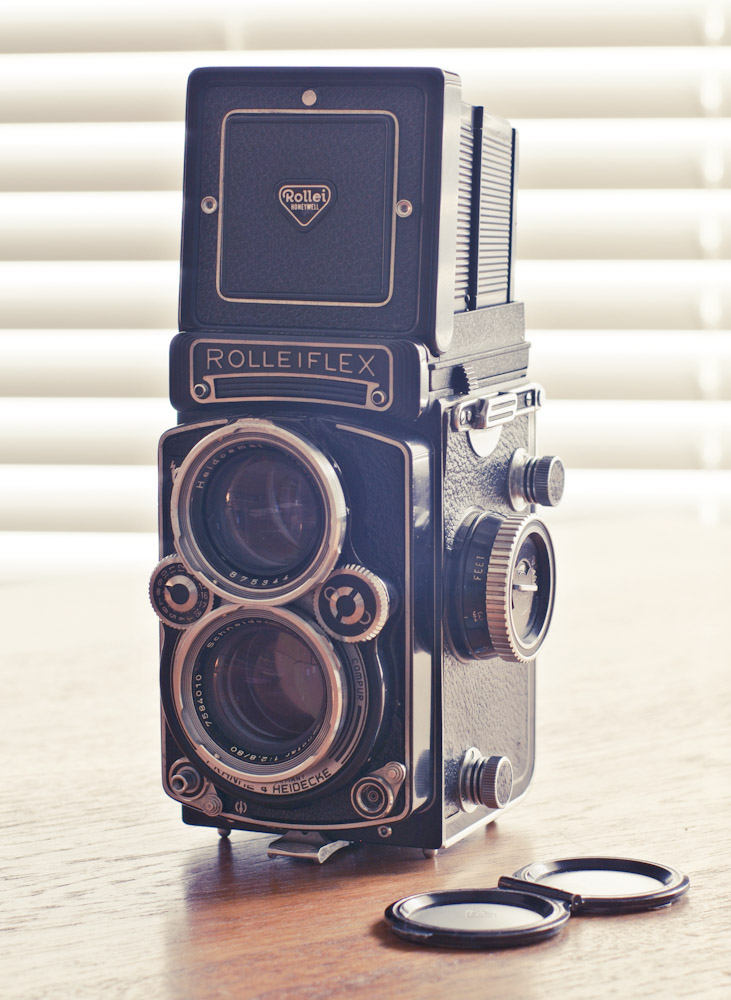
The first Rolleiflex was produced in 1928 with a 75mm f4.5 Zeiss Tessar lens according to “Rollei Photography c1952” by Jacob Deschin. My version however is a 2.8 E3 that was likely produced between 1962 and 1965. My E3 has the Schneider Kreuznach Xenotar 1:2.8/80 taking lens. When handled correctly, as in supported stably and exposed well, the images produced have an amazing amount of detail and depth to them.
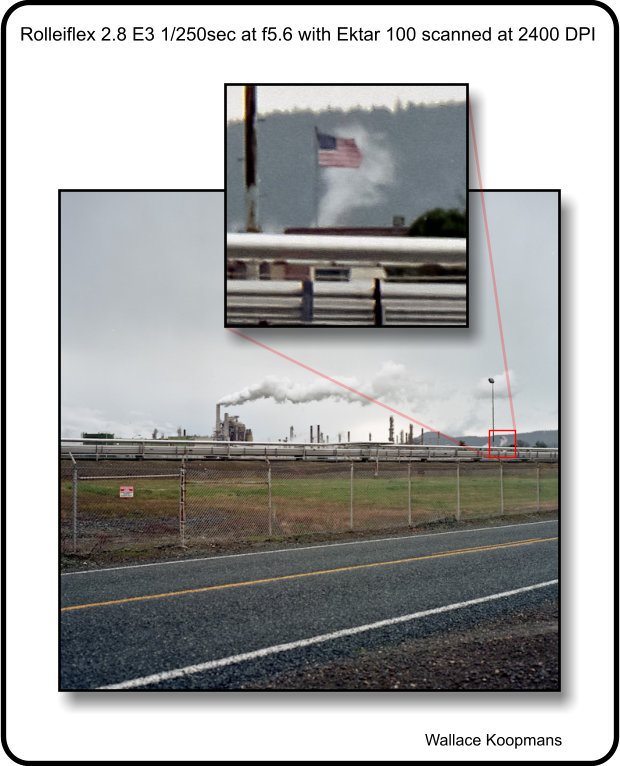
;
Most of these pictures were taken under pretty adverse conditions with high winds and pelting rain forcing me to use a golf umbrella that was eventually turned inside out by a gust. Never the less the camera did not let me down.
;
;
;
A TLR (twin-lens reflex) is in essence two camera together one for viewing the image and one for taking the picture. The image from the viewing lens is formed on the ground glass after bouncing off the internal fixed mirror. This results in an image that is right side up but reversed from left to right. This takes some getting used to because turning the camera one way or the other has the opposite effect on the screen. Because the mirror is fixed, unlike an SLR, there is negligible camera shake as the leaf shutter is tripped. The captured image is recorded on 120 film as 6cm by 6cm, this square format also takes some getting used to for composition but is a nice break from the traditional rectangular formats of most other cameras. Every aspect of this camera exudes quality it is the standard by which I judge other cameras.
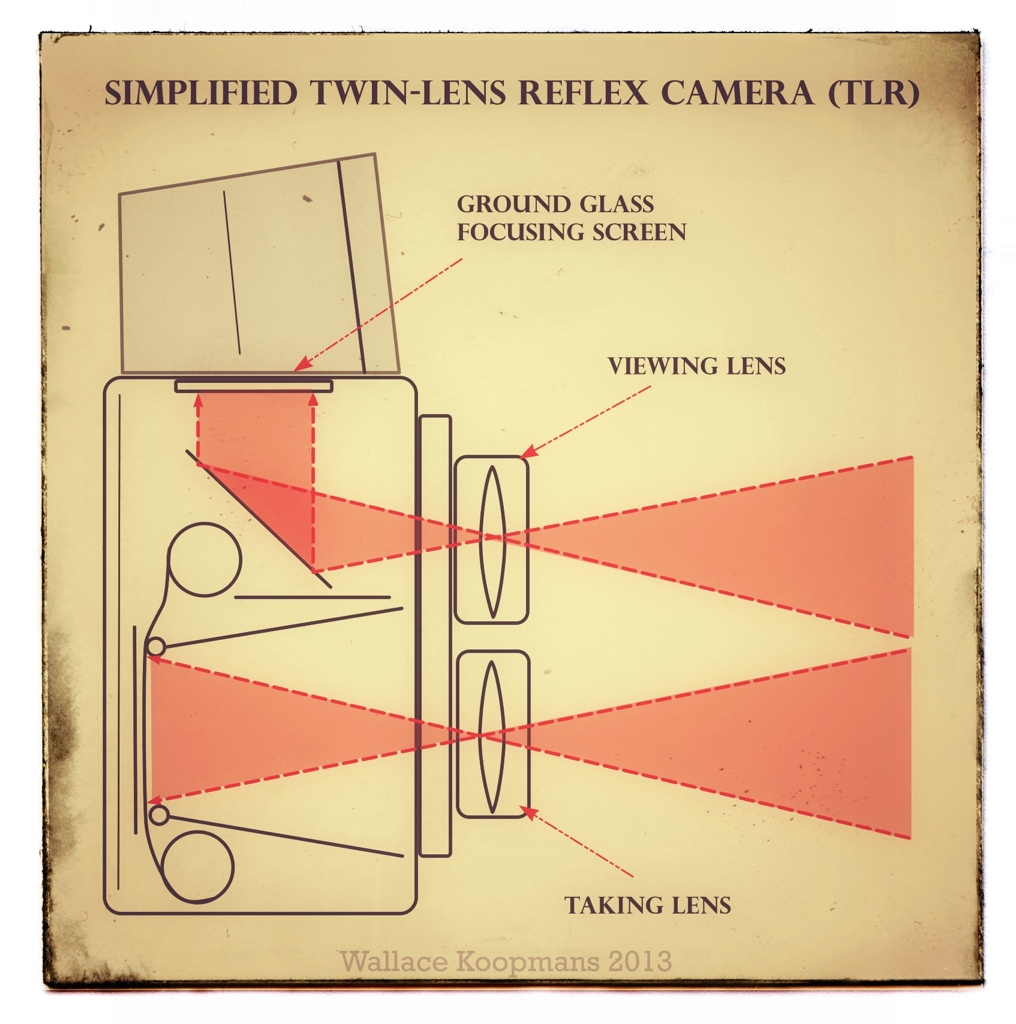
5 comments | tags: film, Photography, Rollei | posted in Cameras, Photography, Processing
Jan
14
2013

Not to be confused with my new Pentax Q or the fictional character on Star Trek the next generation. In the heyday of APS film (insert laugh track here) Fuji released this made in China camera with its 22mm lens that looks more glass bead like than lens like. The striking thing about this camera is its non camera shape, it’s very round. Surprisingly that is what is so appealing about it though, worn around your neck it hangs neatly like a giant medallion and nothing says you are a winner like a purple camera medallion. It did come in other colours but those clearly were not for winners.
No controls no over-rides no problem, take pictures have fun.
1 comment | tags: APS, film, Fuji | posted in Cameras, Photography
Jan
11
2013

The Nikon FG is a small SLR from the early 1980’s similar in size and function to the Olympus OM-1 and the Pentax ME. Like those cameras this camera is manual focus. It does provide a programmed exposure mode as well as aperture priority and full manual. The shutter is electronically controlled so it requires batteries to operate with the exception of 1/90 second and bulb which are mechanical. What the Nikon has over the other two is control over exposure. In addition to the PAM modes it has +-2 stops compensation in half stops and a +2 backlight compensation button. I feel this is a great choice as a compact SLR for anyone wanting to shoot film in addition to digital.
4 comments | posted in Cameras, Photography
Jan
2
2013

Like any true point and shoot you are at the mercy of the camera for both focus and exposure it just happens that this one has a 40mm 1:1.9 lens on the front of it which is something of note. The lens is described by Canon as being five elements in five groups. As for the shutter it also forms the aperture opening. The lens is focused using S.S.T. What you have no idea what that is? Why it’s Solid State Triangulation of course (I looked it up) The camera has automatic film winding which doubles as a mating call for elk or possibly a distress call, I’m not an elk. Oh and it makes a high-pitched squealing sound to alert everyone you are taking a picture, that or it’s a warning for low light I’m not sure about that either. What I am sure of though is that the sounds emanating from the camera don’t effect the excellent quality of the pictures just the taking of them, the Instagramyness of my shots not withstanding (Yes I just added ‘ness’ to Instagram to make it better)
2 comments | posted in Cameras, Photography
Dec
21
2012

Note the letter Q is silent. If you’ve stumbled across this information erroneously in an effort to find something meaningful on the Internet my apologies. So what is this oddity? I’m pleased you asked, no one else ever does. I’ve taken the lens from an APS film Konica Revio CL which has a 25mm focal length and a speed of 1:6.7 and adapted it to the Pentax Q mount. In order to do this I’ve duplicated the distance from the back of the lens to the film only now it’s to the sensor. During the disassembly I preserved the helical focus mechanism. I now turn it by hand using a small stud threaded into the decorative front of the lens. The lens itself is no great performer it’s 3 elements in three groups and doesn’t appear to have any coatings. I’ve found that despite my best efforts at focus most of my mid to far distance shots are on the soft side. This could partially be attributed to defraction caused by the 6.7 f-stop. Where this lens does perform well is at close distances and as a macro lens. The 25mm focal length on the Q yields a “35mm full frame” equivalent of 138mm, that coupled with the fact that the over-ridden focus allows you to get within inches of the subject, you have a large degree of magnification. 
Back to the Q being silent, not only is the Letter Q silent in the name of this lens the camera itself is completely silent as it now uses its electronic shutter. A note on focus. In order to focus reasonably well I’ve turned on focus peaking which was added to the Q with firmware upgrade 1.10, additionally I’ve set 4 times magnification on when manually focusing. The magnification is enacted by pressing OK on the rear control dial. To provide an idea of how small an object you can photograph with this lens here is a lilliputian mushroom in front of a pad lock key. 
For me I see using the Pentax Q as an opportunity to expand the boundaries of what I’m able to photograph, this is the reason I recently purchased the Pentax fisheye lens and am building lenses that do something I can’t do with any of my other gear. Next on my build list are a wide-angle and a telephoto.
3 comments | tags: Konica, lens, Pentax | posted in Cameras
Dec
14
2012
This may be the golden age of digital point and shoot cameras or it may be the amber ale age I’m still undecided. At the top of this heap of little mighty cameras is the new Sony RX1. It’s reached that peak by pairing a sensor equivalent in size to 35mm film with a fast 35mm focal length lens. After a wander in the photographic wilderness it seems Sony has conjured the spirit of Minolta once again, likely before they slip back into the dark and we wonder where they went. The stand out feature of the camera though is its price. I don’t doubt that the price is closely related to the developement and production costs but $2799 buys a lot of consumables (Beer and film). My tongue in cheek chart explains this as clearly as an unfiltered beer. I have no doubt that the camera will actually produce quality images in the hands of competent photographers but then a good photographer would no matter what the camera is. For disclosure one of my all time favourite cameras was the Sony DSC-V3 which I used for years and my primary SLR camera was a Minolta x700.

Other autofocus cameras with a full 35mm size frame and a 35mm lens that now cost less than 1% of a RX1 include; Pentax PC35AF, Canon AF35ML (OK it’s 40mm but it’s also f/1.9), Nikon L35AF, Olympus Stylus Epic. I’m sure there are more but I think I’ve made my point and shoot.
3 comments | tags: beer, camera, Digital, film, review, rx1, Sony | posted in Cameras, Photography
Dec
10
2012

A camera that’s more about style than function. I had hoped that its having a 35mm lens would put it on par with the lens of the Stylus Epic but that camera has an f2.8 maximum aperture vs the 3.5 of the LT-1. The epic is all around a better camera it just isn’t wrapped in a nice fake brown leather. And that’s all I have to say about that.
1 comment | tags: camera, film, olympus | posted in Cameras, Photography


